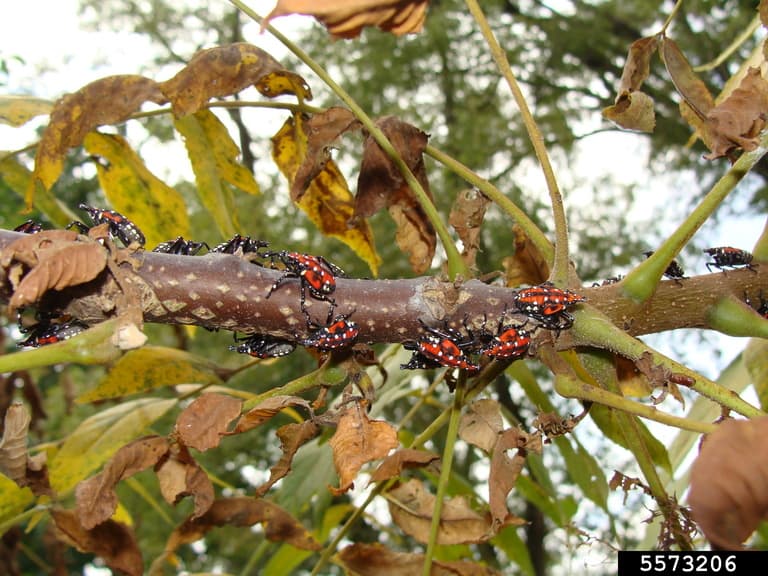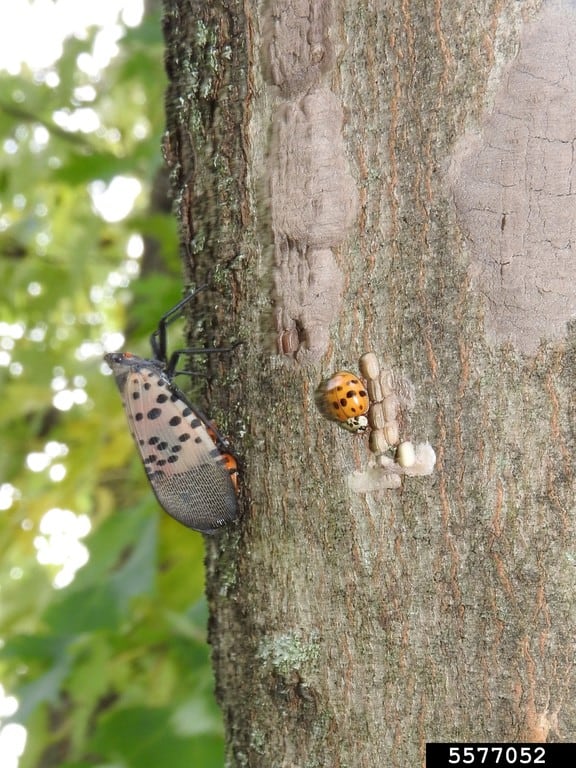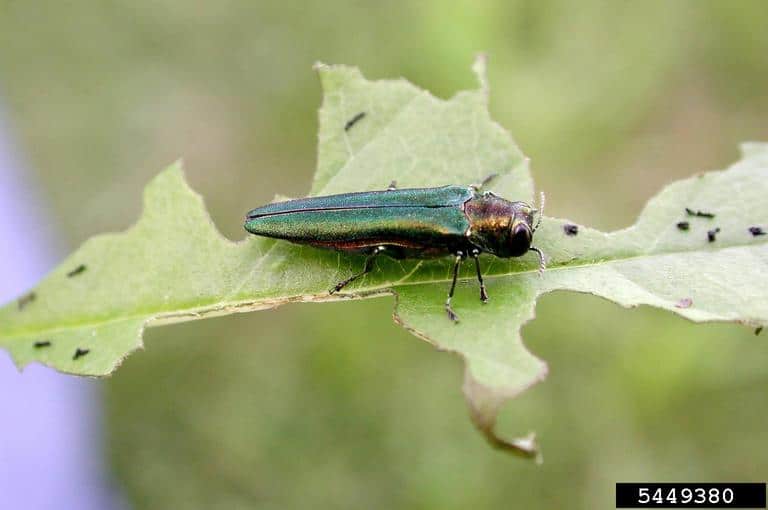Creature Feature

Lanternfly (Eric R. Day, Virginia Polytechnic Institute and State University, Bugwood.org ) 
Lanternfly (Richard Gardner, Bugwood.org ) 
Emerald ash borer (Debbie Miller, USDA Forest Service, Bugwood.org )
A Closer Look at Invasive Insects
The pine woods around Blackwater National Wildlife Refuge are retreating, leaving large stands of dead and dying trees. They are dying because of the rising water level.
Last year, I took a boat trip down the Paatuxent River and was startled by the vast number of dead swamp ash trees. The death of the swamp ash is now common around the Chesapeake Bay and all its tributaries, but its death does not come from rising water but rather an invasive insect, the emerald ash borer.
The insect feeds along the cambium layer of the tree, a part of the tree which is important for nutrient transport. Once the borer invades the cambium, nutrients stop flowing and the tree slowly dies. When the borer’s grub phase is completed, it will mature into a flying beetle and travel to lay eggs in other trees.
The Maryland Department of Agriculture estimates that ash trees represent between 10 to 15 percent of all of Maryland’s trees. Woodlands composed mainly of ash support a vast variety of other plants and animals. Since its introduction to the U.S. from Asia or Russia, the beetle has killed millions and millions of ash trees and has cost in excess of $20 billion of lost revenue and tree replacement costs.
The emerald ash borer invades all species of ash including three species that are listed as critically endangered. Many tree specialists worry that all ash species are at risk of extinction. The invasion is now firmly entrenched everywhere in the Northeast U.S. Certain areas are harder hit than others. Efforts are under way to save ill trees and ash seeds are being saved for replanting after the beetles have moved on. This is why it is important to not transport firewood as it could have borers living in it.
Recently another invasive insect has crossed into Maryland from Asia via Pennsylvania, the spotted lanternfly. This Asian bug is not a beetle but resembles a large colorful leafhopper. The young are black or red with white spots and the adults have colorful wings with black spots. Once they develop wings, they can fly off to lay eggs. An egg clutch of 60 eggs is laid on a tree trunk; the egg mass resembles a two-inch gray zipper and can survive over winter.
In an effort to track and contain its spread, the U.S. Department of Agriculture is issuing alerts for everyone to be on the lookout for the insect. Spotted lanternflies should be killed, collected and reported to the USDA. Since 2017, it has become a serious problem in Pennsylvania, and the Penn. Agriculture Extension states, “the spotted lanternfly causes serious damage in trees including oozing sap, wilting, leaf curling, and tree dieback.”
“In addition to tree damage, when spotted lanternflies feed, they excrete a sugary substance, called honeydew, that encourages the growth of black sooty mold. This mold is harmless to people however it causes damage to plants. In counties infested and quarantined for spotted lanternfly, residents report hundreds of these bugs that affect their quality of life and ability to enjoy the outdoors during the spring and summer months. Spotted lanternflies will cover trees, swarm in the air, and their honeydew can coat decks and play equipment.”
If allowed to spread in the United States, this pest could seriously impact the country’s grape, orchard, and logging industries. Be vigilant in helping our native forests thrive without the threat of invasive insects. To report a spotted lanternfly sighting, call 410-841-5920 or email [email protected].
